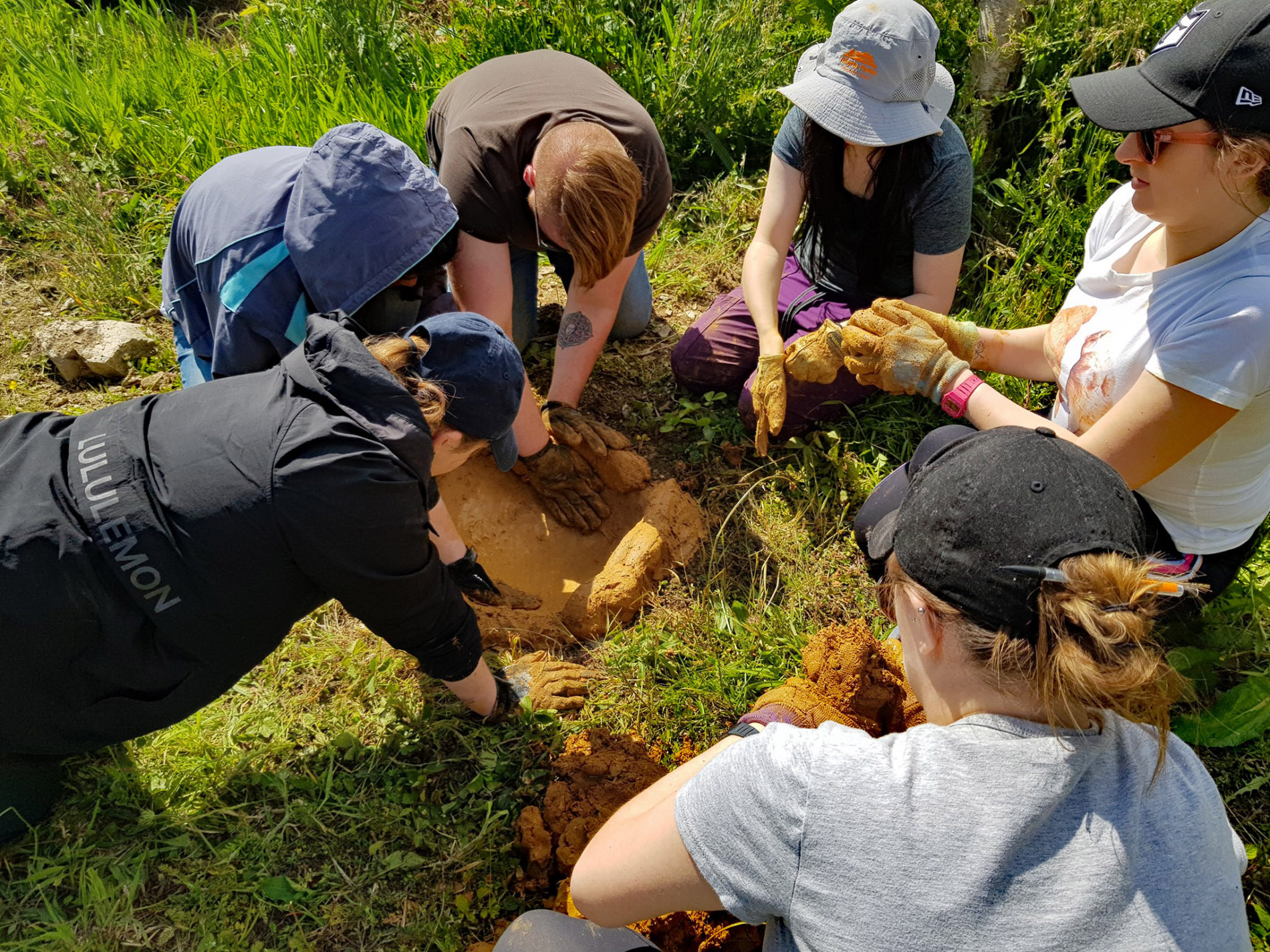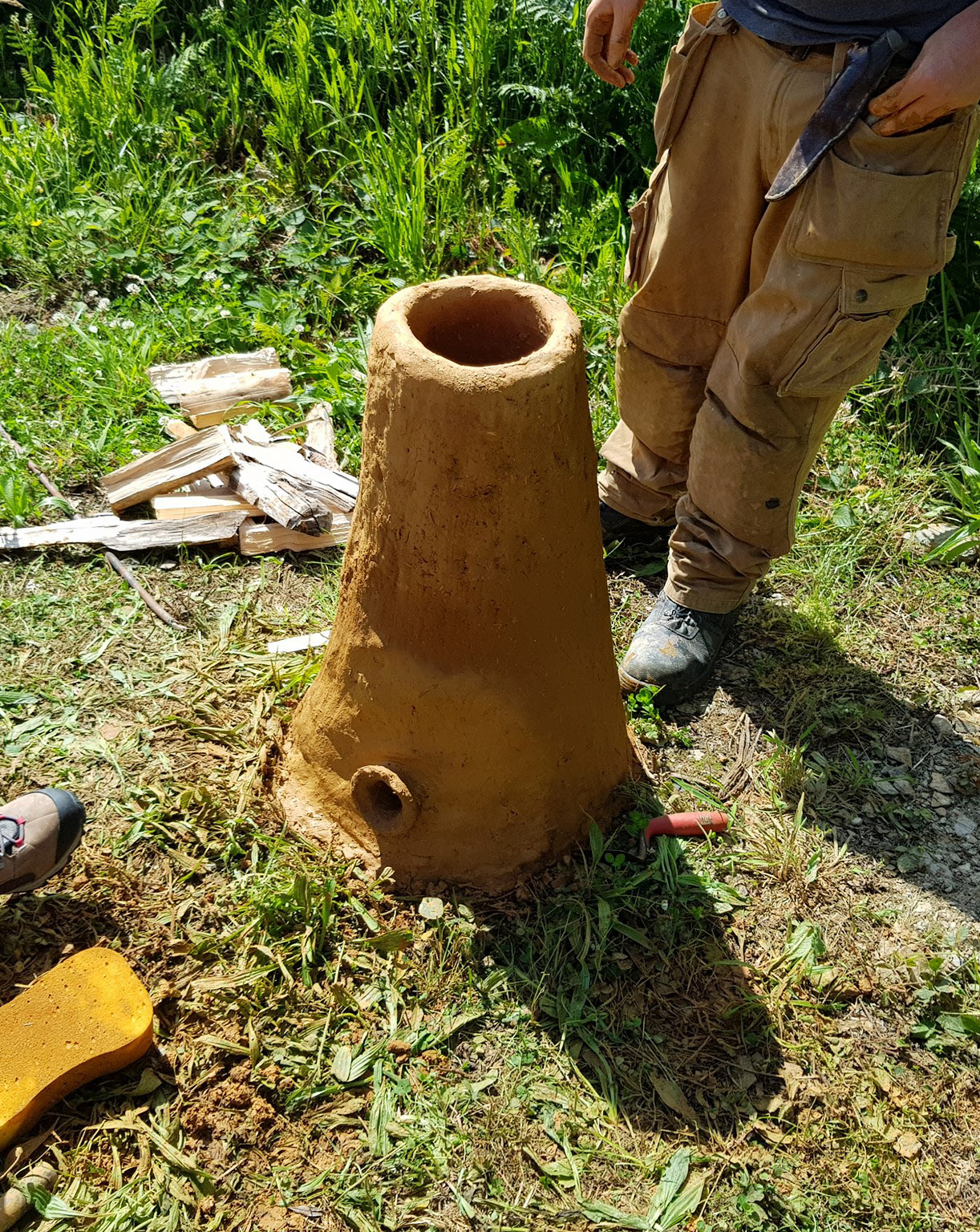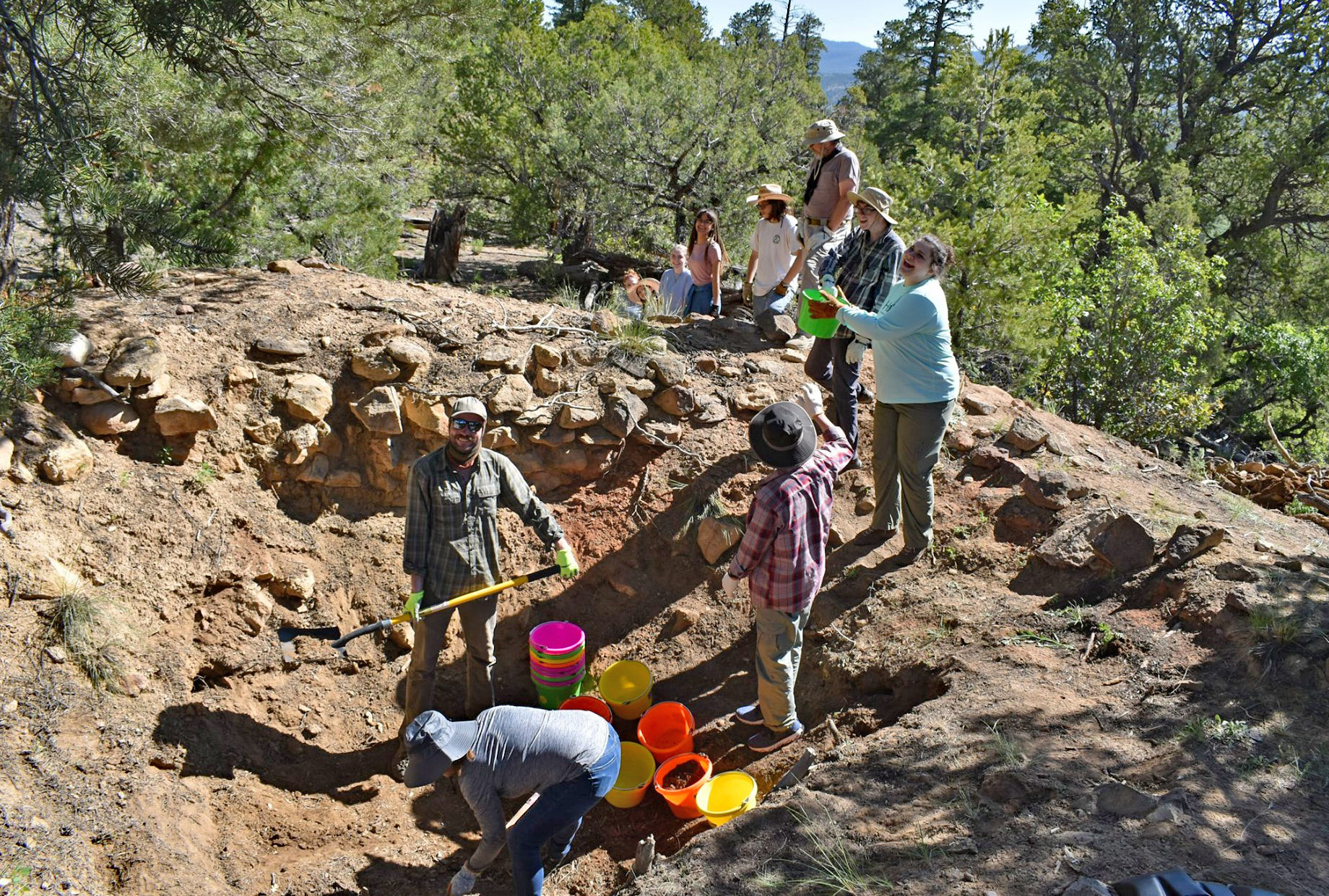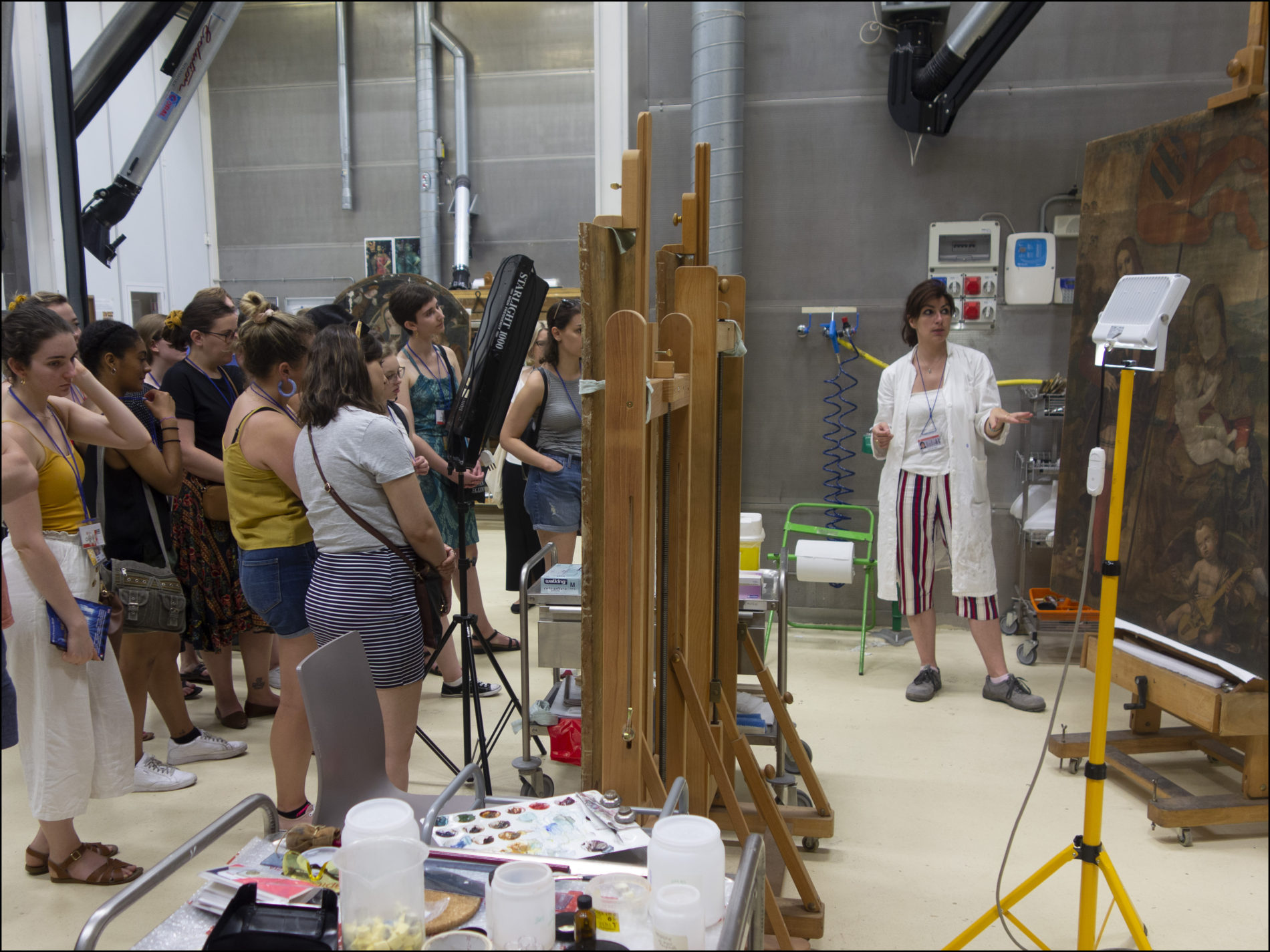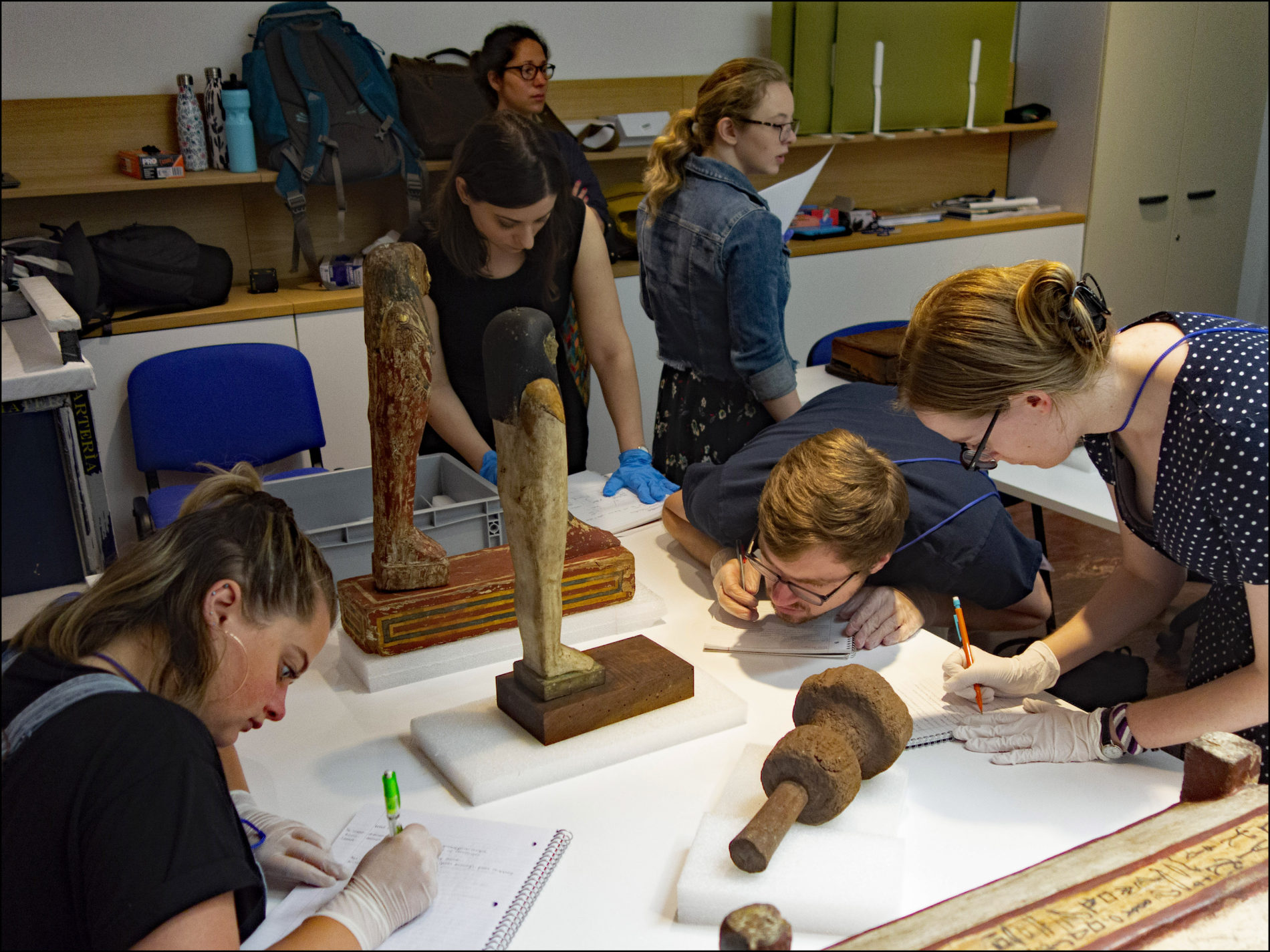Summer is here, and our field season is in full swing! From museum studies to primatology to indigenous archaeology, IFR students are engaged in hands-on research around the world. Check out the following updates from some teams in the field this year:
Ireland: Experimental Archaeology
These students are building a 13th century style furnace after exploring some archaeological furnace remains uncovered on site at the Irish National Heritage Park in Wexford. During this field school, students are researching medieval crafts and technologies using methods of experimental archaeology to replicate and examine production processes. Co-director, Dr. Brendan O’Neill from University College Dublin (lower right), lends his expertise in craft, industry, and society in Early Medieval Ireland (AD 400-1100) and ten years experience in a range of ancient technologies.
New Mexico: Gallina Landscapes Southwest Archaeology
The students began to open up last year’s excavations, including a heavily looted surface structure, to properly map them and take samples for determining construction dates. At the end of the season, they will backfill the structures so that the looter damaged is no longer visible. Part of the project’s goal is to implement landscape reparations on damaged archaeological sites.
Image two: The pink bucket brigade is working on a room that has a lot of damage from erosion and pothunters — but look at that beautiful flagstone floor!
Image three:This is a Pueblo side notched point with a convex base found by one of the students on a Gallina site. It is made from obsidian that was most likely from a source in the Jemez region. Artifacts found during pedestrian survey are left in place. The material record is as rich as the documentary record, and the team tries to keep as many “pages” intact in this unique material book as possible.
Italy: Turin Museum Studies
The students at this field school have the chance to be actively involved in all aspects of the preservation, study, and presentation of museum objects at Museo Egizio in Italy. They get many behind-the-scenes tours of the labs and conservation rooms in the museum. Thus far, they have examined and recorded data on a selection of wooden objects, conducted ceramics and textile analysis, and examined Egyptian mummies.
While so much fieldwork and research has happened already, we still have a few months of summer to go! We look forward to learning what the upcoming field schools have to tell.
All the best,
The IFR Team


